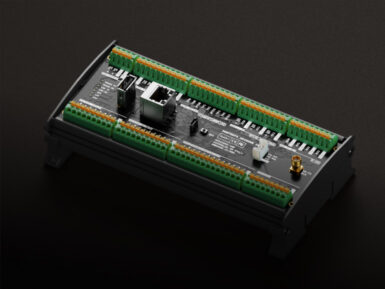
Overview
This Dust Sensor gives a good indication of the air quality in an environment by measuring the dust concentration. The Particulate Matter level (PM level) in the air is measured by counting the Low Pulse Occupancy time (LPO time) in given time unit. LPO time is proportional to PM concentration.
This sensor can provide reliable data for air purifier systems; it is responsive to PM of diameter 1μm.
Note: This sensor uses counting method to measure dust concentration, not weighing method, and the unit is pcs/L or pcs/0.01cf.
Tech specs
|
Item |
Norm |
Unit |
|
VCC |
4.75~5.75 |
V |
|
Standby Current Supply |
90 |
mA |
|
Detectable range of concentration |
0~28,000 / 0 ~ 8000 |
pcs/liter / pcs/0.01cf |
|
Operating Temperature Range |
0~45 |
°C |
|
Output Method |
Negative Logic, Digital output, High: over 4.0V(Rev.2), Low: under 0.7V |
- |
|
Detecting the particle diameter |
>1 |
μm |
|
Dimensions |
59(W) × 45(H) × 22(D) |
mm |
|
Humidity Range |
95% rh or less |
- |
Pinmaping
|
Arduino UNO |
Dust Sensor Pin |
Cable Color |
|
5V |
Pin 3 |
Red wire |
|
GND |
Pin 1 |
Black wire |
|
D8 |
Pin 4 |
Yellow wire |
Get Inspired

At Arduino, we’re committed to providing developers with tools that make the coding process smooth and efficient. That’s why we're thrilled to announce the new Arduino_PortentaMachineControl library, an upgraded version designed to replace the deprecated Arduino_MachineControl library. It comes with a number of improvements, from a revamped structure to enhanced documentation, making it easier than ever to manage the features of the Arduino Portenta Machine Control. Don’t know the Arduino Portenta Machine Control? It’s a versatile industrial control unit offering soft-PLC control, diverse I/O options, and flexible network connectivity. For more information about this product, visit the dedicated page. What you’ll find in the new library Enhanced library structure: We restructured the library to improve its organization, making it more intuitive. This ensures that you can quickly locate and utilize the functions you need for your projects. Easier-to-understand names: We standardized function and class names for better consistency and readability. This change ensures a clearer and more understandable codebase. Optimized efficiency: We eliminated unnecessary functions, decluttering the library and focusing on the essential features needed for effective machine control. Refreshed and clearer examples: You’ll find reworked examples to showcase the library’s capabilities, providing a better demonstration of the board’s features and of their usage. User manual and migration tutorial But that’s not all! Alongside the library, we’re excited to release the official user manual for the Arduino Portenta Machine Control: an essential and in-depth guide to all the board’s features, readily available to all users. In addition – knowing that transitioning from the old Arduino_MachineControl library might pose some challenges – we’ve prepared a detailed migration tutorial to guide you seamlessly through the process. Make the switch






